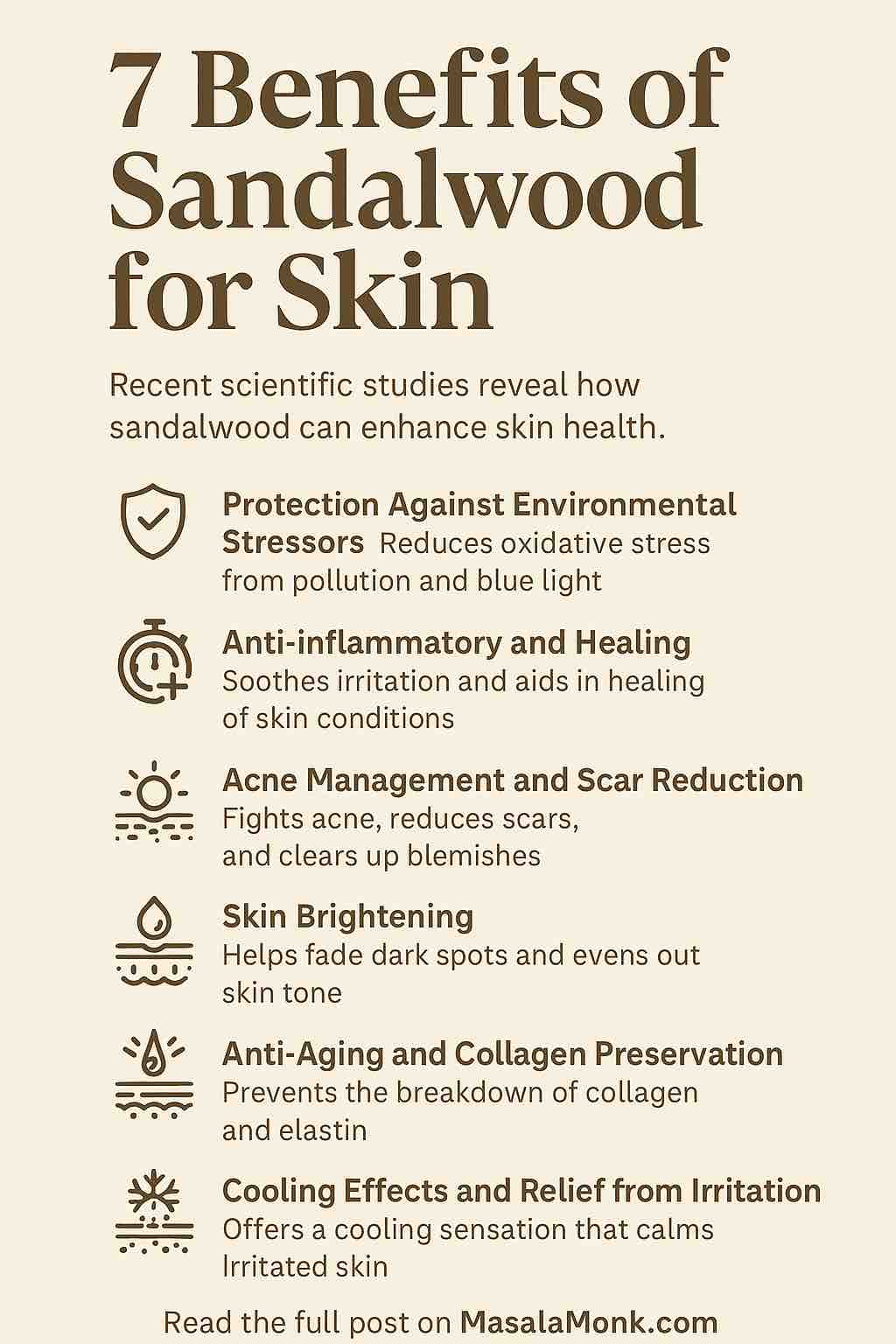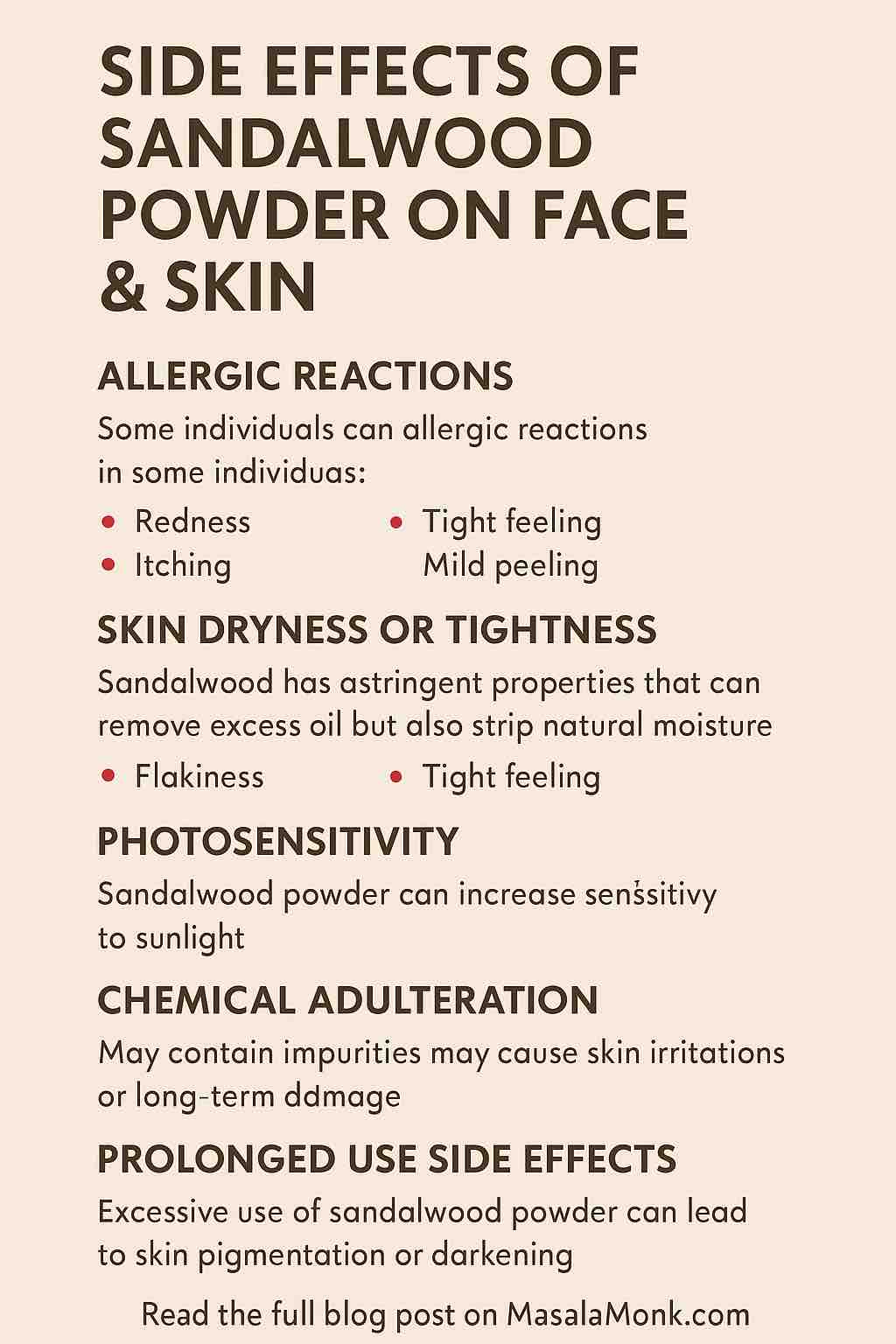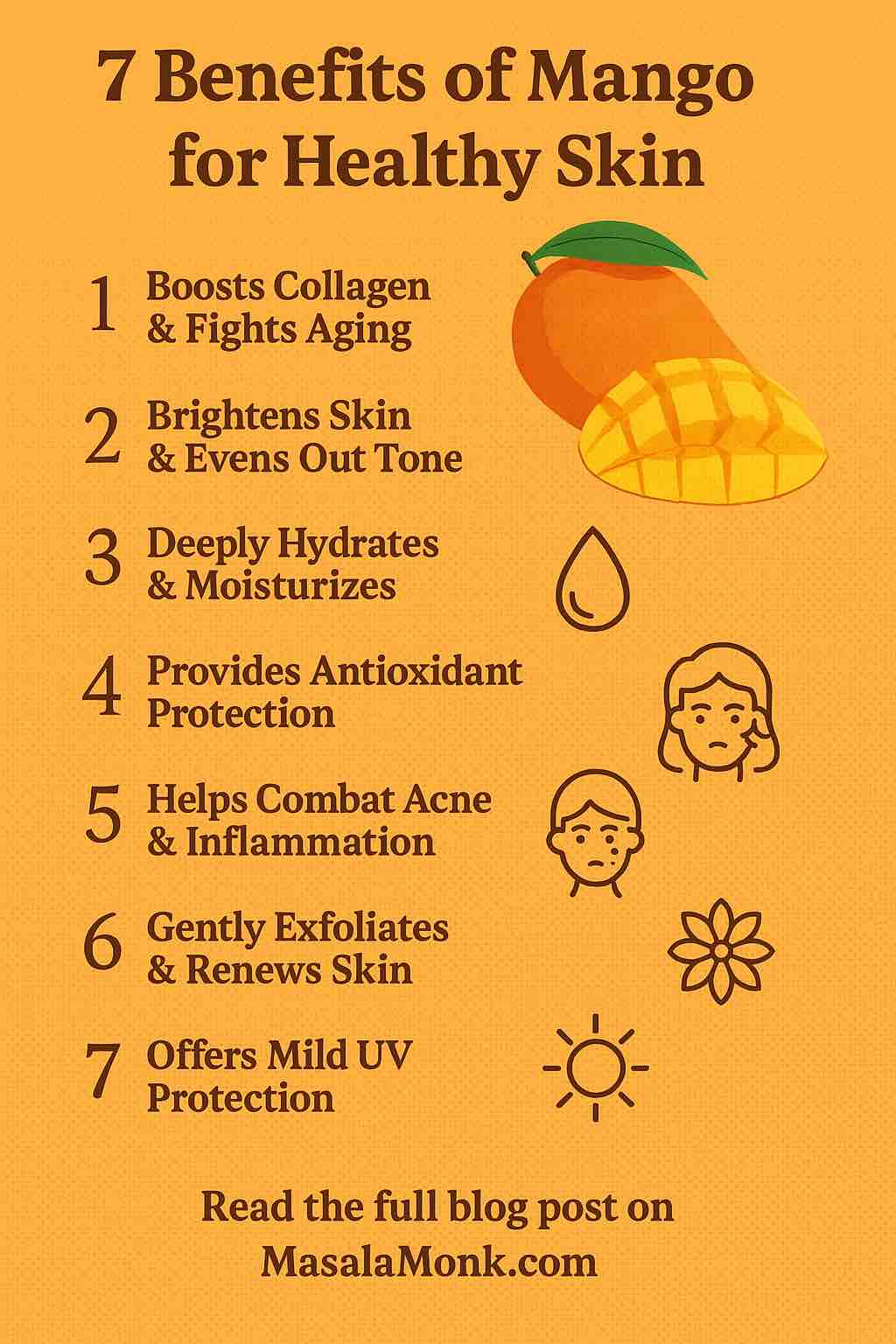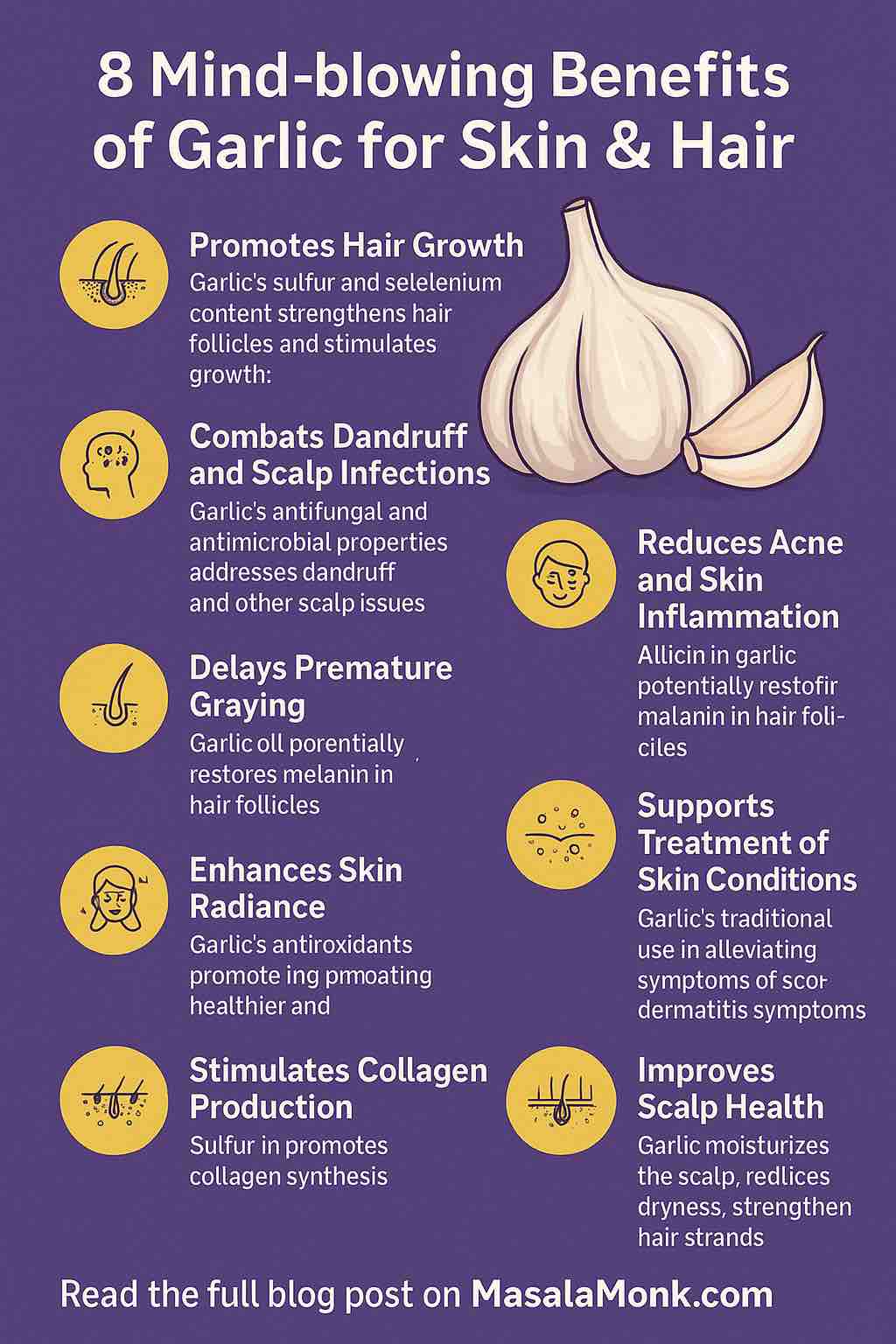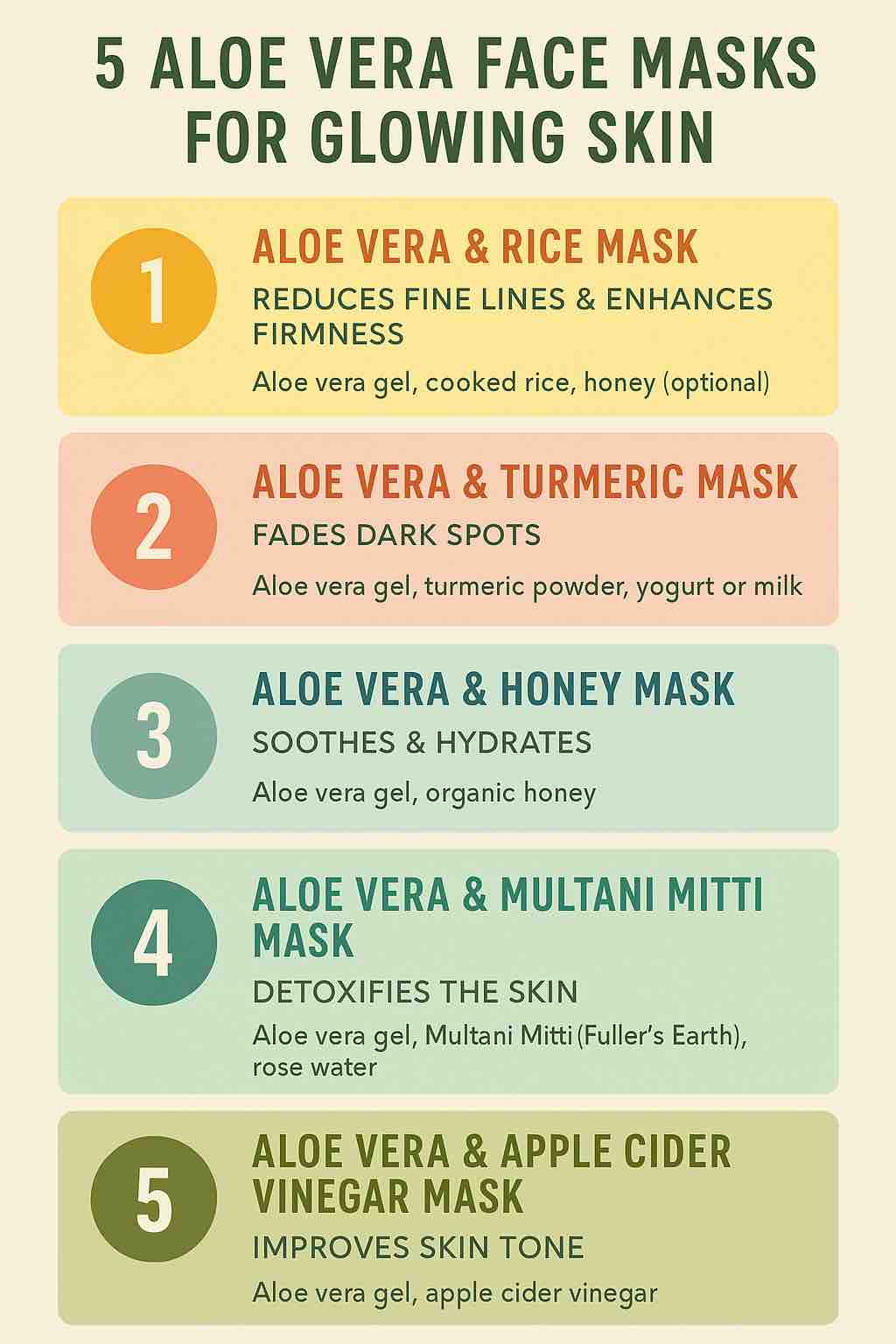
Aloe vera has been revered across cultures for centuries—and for good reason. From ancient Egypt where it was known as the “plant of immortality” to Ayurveda and modern dermatology, this unassuming succulent is a powerhouse of skin-loving nutrients.
With a shift toward natural skincare and minimalist routines, aloe vera face masks are experiencing a resurgence in popularity. If you’re looking to restore your skin’s natural glow, boost hydration, reduce pigmentation, and fight early signs of aging—all without harsh chemicals—these five aloe vera face masks offer targeted, effective results.
This comprehensive guide walks you through how aloe vera works, how to prepare each mask, and what skin types benefit most.
🌱 Why Use Aloe Vera on the Face for Glowing Skin?
Before we get into specific face mask recipes, it’s helpful to understand why aloe vera is a staple ingredient in so many skincare routines.
✅ Skin Hydration
Aloe vera gel contains over 95% water, making it an ultra-hydrating base for face masks that doesn’t clog pores.
✅ Anti-Aging Properties
Recent research has highlighted aloe vera’s ability to boost collagen, reduce wrinkles, and fight signs of aging thanks to antioxidants like vitamin C, E, and beta carotene.
✅ Soothing & Healing
Its anti-inflammatory and antimicrobial compounds help reduce redness, calm irritated skin, and speed up wound healing.
✅ Natural Exfoliation
Aloe contains natural salicylic acid and enzymes that gently exfoliate, helping remove dead skin cells and reveal brighter skin.
✨ Key Benefits of Aloe Vera for Skin:
| Property | Benefit |
|---|---|
| Hydrating | Aloe vera is 95–97% water, making it intensely moisturizing without being greasy. |
| Anti-inflammatory | Soothes redness, swelling, and irritation—ideal for acne-prone and sensitive skin. |
| Antibacterial & Antifungal | Helps prevent and manage acne and infections. |
| Rich in Antioxidants | Vitamins C, E, and beta-carotene combat free radicals that cause dullness and aging. |
| Mild Exfoliant | Enzymes in aloe help shed dead skin cells and reveal brighter skin underneath. |
| Promotes Collagen Production | Supports elasticity and skin repair over time. |
⚗️ Preparation Tips Before You Begin
- Use fresh aloe vera gel directly from the leaf whenever possible. It’s more potent and less likely to contain additives.
- If using store-bought aloe vera, ensure it’s at least 90–95% pure with no added alcohol or artificial fragrance.
- Always do a patch test, especially if you’re adding ingredients like turmeric or apple cider vinegar.
🧖♀️ 1. Aloe Vera & Rice Mask – For Dull, Uneven Skin
🌾 Why It Works:
This combination offers skin-brightening and firming benefits. Rice is rich in amino acids and antioxidants, while aloe hydrates and supports skin regeneration.
🌿 Ingredients:
- 2 tablespoons fresh aloe vera gel
- 1 tablespoon cooked white rice (soft and mushy)
- 1 teaspoon honey (optional for added moisture)
👩🔬 Directions:
- Mash the rice or blend it until smooth.
- Mix with aloe vera and honey into a creamy paste.
- Apply on a clean face, avoiding the eye area.
- Let it sit for 15–20 minutes.
- Rinse off with lukewarm water and pat dry.
✅ Best For:
- Dullness
- Uneven texture
- Fine lines
Note: Regular use helps tighten pores and gently brighten your skin tone over time.
🧴 2. Aloe Vera & Turmeric Mask – For Pigmentation & Glow
🌟 Why It Works:
Turmeric contains curcumin, a powerful antioxidant with anti-inflammatory and brightening properties. Aloe helps deliver it deep into the skin while minimizing potential irritation.
🌿 Ingredients:
- 1 tablespoon aloe vera gel
- A pinch of turmeric powder (not more than 1/8 teaspoon)
- 1 tablespoon milk or yogurt (lactic acid helps exfoliate gently)
👩🔬 Directions:
- Mix all ingredients into a smooth paste.
- Apply a thin layer to your face and neck.
- Let it sit for 10–15 minutes. Avoid leaving on too long to prevent yellow staining.
- Wash off with warm water and follow with moisturizer.
✅ Best For:
- Hyperpigmentation
- Dark spots
- Uneven skin tone
Note: Use this mask no more than twice per week to avoid skin sensitivity or turmeric staining.
💧 3. Aloe Vera & Honey Mask – For Dry and Sensitive Skin
🍯 Why It Works:
Honey is a natural humectant—it draws moisture into the skin and retains it. Aloe vera boosts hydration and calms irritation, creating the ultimate moisture-locking mask.
🌿 Ingredients:
- 2 tablespoons aloe vera gel
- 1 tablespoon raw organic honey
👩🔬 Directions:
- Mix aloe and honey thoroughly.
- Apply a generous layer to the face.
- Leave on for 15–20 minutes.
- Gently massage and rinse with cool water.
✅ Best For:
- Dry or flaky skin
- Dehydration
- Redness or sensitivity
Tip: This is a great pre-makeup mask to give your skin a dewy, supple base.
🌬 4. Aloe Vera & Multani Mitti (Fuller’s Earth) Mask – For Oily & Acne-Prone Skin
🧪 Why It Works:
Fuller’s earth absorbs excess oil, draws out impurities, and clears out congested pores. Aloe vera keeps the mask from over-drying while reducing inflammation and helping the skin heal.
🌿 Ingredients:
- 1 tablespoon Multani mitti
- 1 tablespoon aloe vera gel
- Rose water or plain water (enough to create a paste)
👩🔬 Directions:
- Combine ingredients into a smooth paste.
- Apply to face, focusing on the T-zone.
- Allow to dry for 10–12 minutes (don’t let it crack).
- Rinse with lukewarm water and moisturize.
✅ Best For:
- Oily skin
- Blackheads
- Clogged pores
Note: Use this mask once or twice a week to balance oil without over-stripping.
🍎 5. Aloe Vera & Apple Cider Vinegar Mask – For Exfoliation & Glow
🔬 Why It Works:
Apple cider vinegar (ACV) restores the skin’s pH, dissolves dead skin cells, and fights acne. Aloe soothes and balances ACV’s astringent nature.
🌿 Ingredients:
- 2 tablespoons aloe vera gel
- 1 teaspoon raw, unfiltered ACV
- A few drops of water (to dilute further for sensitive skin)
👩🔬 Directions:
- Mix ingredients in a bowl.
- Apply a thin layer to your skin.
- Leave on for no more than 5–7 minutes.
- Rinse well and apply a calming moisturizer.
✅ Best For:
- Dull, tired-looking skin
- Acne-prone areas
- Enlarged pores
Caution: ACV is potent. Avoid using more than once a week and always do a patch test first.
🧠 Final Thoughts: Choosing the Right Aloe Vera Face Mask
Here’s a quick guide based on your skin concern:
| Skin Concern | Recommended Mask |
|---|---|
| Dullness & Texture | Aloe + Rice |
| Dark Spots | Aloe + Turmeric |
| Dryness & Redness | Aloe + Honey |
| Oily Skin & Acne | Aloe + Multani Mitti |
| Uneven Tone & Glow | Aloe + ACV |
🌼 Additional Tips for Best Results
- Consistency is key: Use your chosen mask 1–2 times weekly for at least a month to see visible results.
- Always follow up with a moisturizer, especially after masks that cleanse or exfoliate.
- Don’t mix too many active ingredients. Let the natural properties of each mask shine.
- Practice good skincare hygiene: Always use clean hands and bowls when preparing DIY masks.
💬 Final Words
Natural skincare doesn’t have to be complicated. These five aloe vera face masks combine ancient wisdom with modern understanding, helping you nourish your skin with what it truly needs.
Whether you’re looking to brighten, hydrate, or clear your skin, aloe vera offers a gentle, effective foundation for glowing skin. ✨
⚠️ Disclaimer
This blog post is for informational purposes only and does not constitute medical advice. While aloe vera and natural remedies are generally safe for most skin types, individual reactions can vary. Always conduct a patch test before trying any new mask, especially if you have sensitive or allergy-prone skin. If you have a pre-existing skin condition or are under dermatological care, please consult your healthcare provider before using DIY skincare treatments.
❓ 10 Frequently Asked Questions (FAQs)
1. Can I use aloe vera on my face every day?
Yes, pure aloe vera gel is gentle enough for daily use. However, when mixed with other active ingredients (like turmeric or ACV), limit use to 1–2 times a week to avoid irritation.
2. How long does it take to see results from aloe vera face masks?
Results vary by skin type and condition. Most people notice a subtle glow after the first use, but visible improvement in tone, texture, or pigmentation typically requires consistent use over 3–4 weeks.
3. Is fresh aloe vera better than store-bought gel?
Yes. Fresh aloe vera retains more nutrients and is free from preservatives or additives. If using store-bought, choose one with at least 90% pure aloe and no alcohol or synthetic fragrance.
4. Can aloe vera face masks help with acne?
Absolutely. Aloe has anti-inflammatory and antibacterial properties that help calm acne and reduce redness. Combine with Multani mitti or turmeric for enhanced acne-fighting benefits.
5. Can these masks be used on all skin types?
Most of the listed masks are suitable for all skin types, with specific ones targeting oily, dry, or sensitive skin. Always adapt the ingredients and frequency based on your individual skin needs.
6. Can I store leftover face mask mixtures?
It’s best to use fresh mixtures. Natural masks with no preservatives can spoil quickly, especially those with dairy, rice, or fruit components. Discard any leftover mask after use.
7. Will turmeric in the mask stain my skin?
A small pinch of high-quality turmeric won’t usually stain the skin if used correctly and for the right duration (10–15 minutes). Avoid using kitchen turmeric with added colorants.
8. How often should I use an aloe vera face mask?
Once or twice a week is ideal for most aloe-based masks. Overuse—especially with strong ingredients like ACV or clay—can strip the skin or cause sensitivity.
9. Is it safe to use aloe vera masks during pregnancy?
Topical use of pure aloe vera is generally safe during pregnancy, but always consult your healthcare provider, especially when mixing with essential oils or other actives.
10. Can aloe vera lighten dark spots or pigmentation?
Over time, yes. Aloe vera contains compounds like aloin and aloe-emodin, which have been shown to reduce pigmentation and improve skin clarity with regular application.

